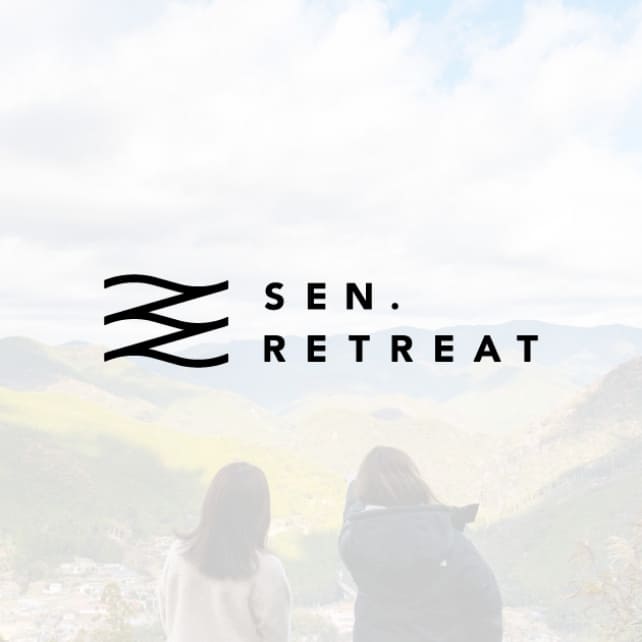
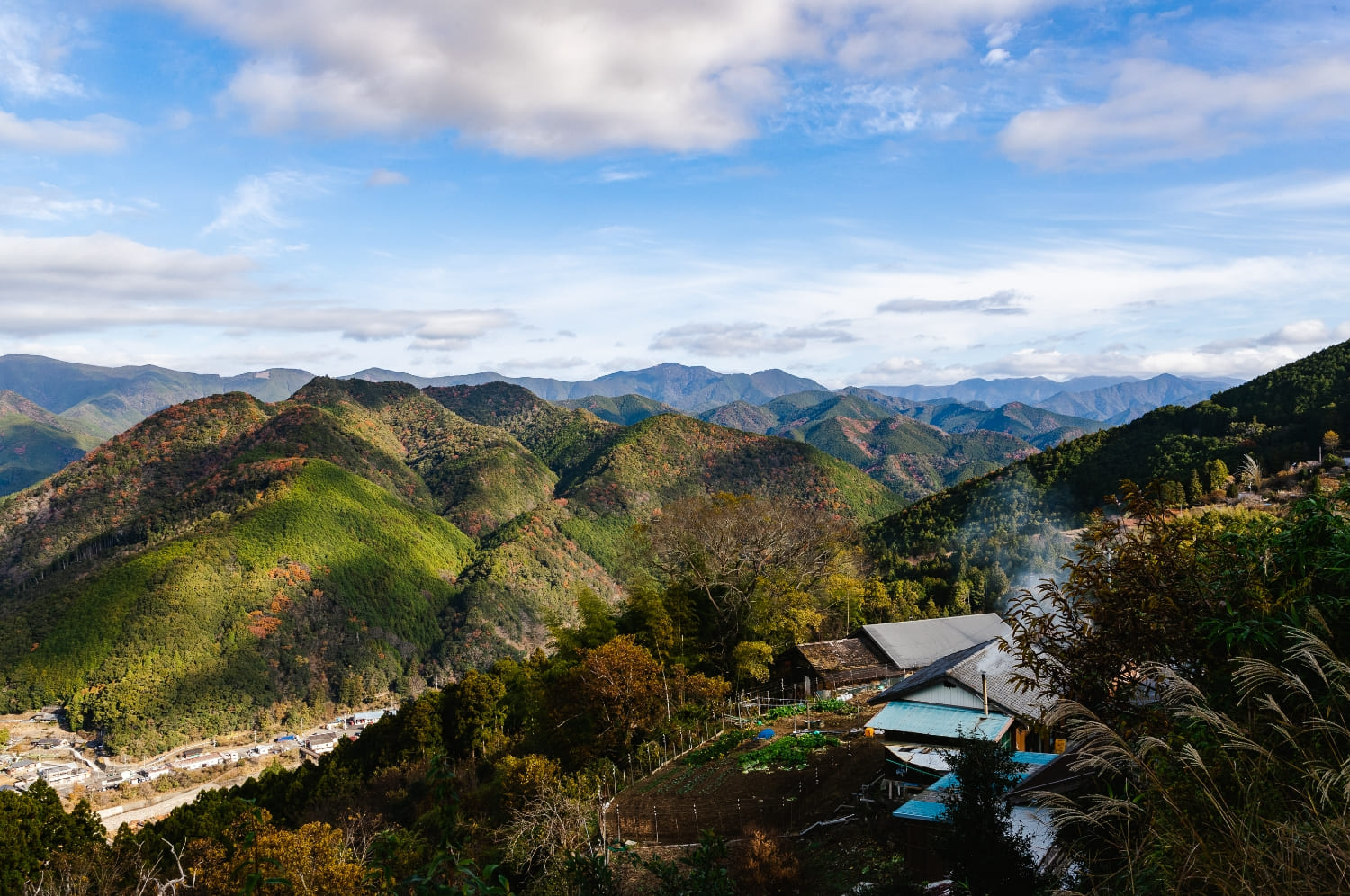
Kumano Kodo in Winter: Best Hiking Routes, Sights, What to Wear & Pack
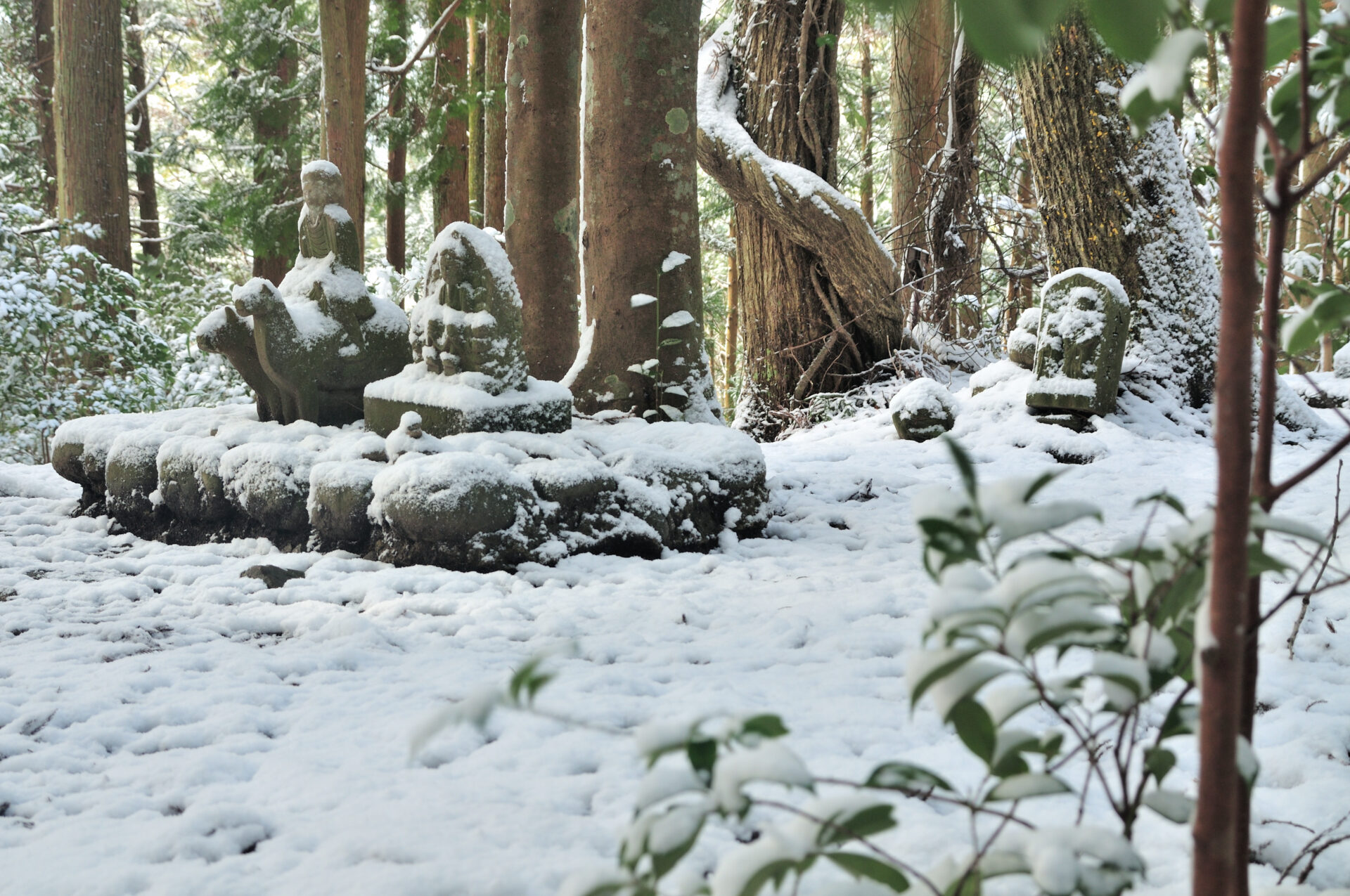
Kumano Kodo in Winter: Recommended Hiking Routes
Kumano Kodo: Ise-ji Route
The Kumano Kodo is a network of pilgrimage trails that spans one prefectural metropolis and three prefectures—including Wakayama—and leads to the three grand shrines known collectively as the Kumano Sanzan.
Among the five principal routes of the Kumano Kodo, this article focuses on the Ise-ji Route, which runs down the eastern coast of the Kii Peninsula. Although it’s less traveled than major routes like the Nakahechi, the Ise-ji follows the Pacific coastline, giving it a milder climate in winter—making it an excellent choice for cold-season trekking.
The Ise-ji Route leads pilgrims from Ise Jingu (Ise Grand Shrine) toward the Kumano Sanzan—the three grand shrines of Kumano. This path crosses multiple mountain passes where you can enjoy varied scenery, from sweeping views of the Kumano-nada Sea to iconic terraced rice fields often hailed among Japan’s most beautiful.
[Recommended] Ise-ji: 2-Day / 1-Night Walking Itinerary
Day 1
Magose-toge Pass → Mt. Tengurasan
→ Owase Shrine — Home to the towering “Meoto Kusu,” a pair of camphor trees said to be over 1,000 years old.
→ Onigajo — From the lookout known as Oni-no-Miharashidai, you get a panoramic view over the Kumano-nada Sea.
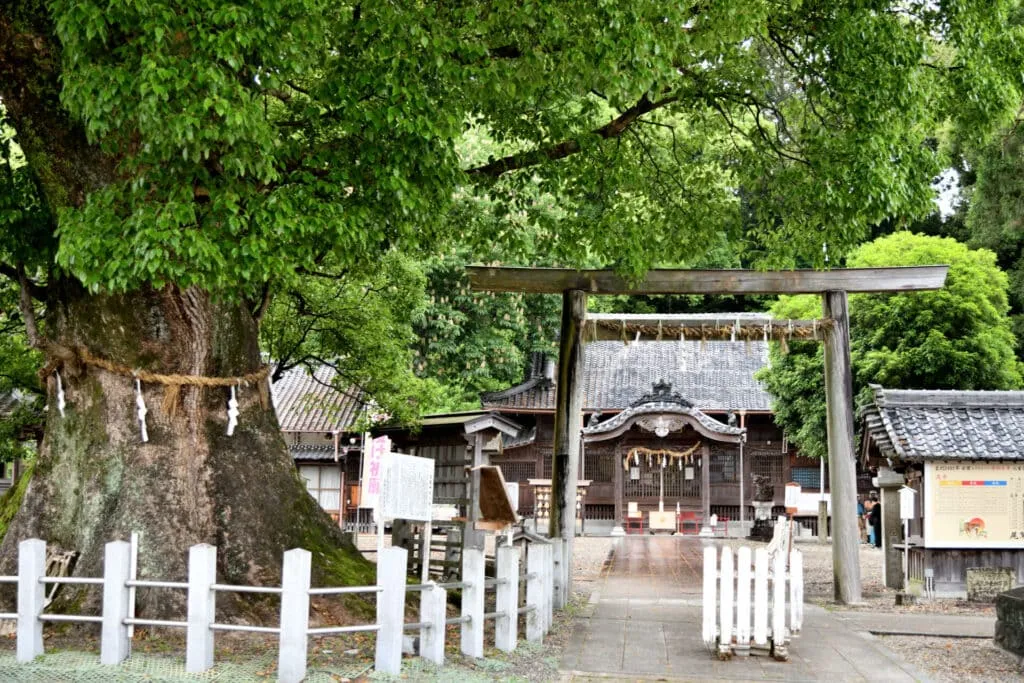
Day 2
Shichirimihama Beach & Shishi-iwa Rock (Lion Rock)
Start your day with the sunrise at Shichirimihama, Japan’s longest shingle beach, stretching for over 20 kilometers along the Kumano-nada Sea. From nearby Shishi-iwa Rock, shaped like a lion facing the ocean, enjoy a spectacular morning view.
Hana-no-Iwaya Shrine
Designated as a UNESCO World Heritage Site, this ancient shrine is one of the most sacred and spiritual spots along the Kumano Kodo.
Kumano River Boat Ride – Maruyama Senmaida – Yumoto Sanso Yunokuchi Onsen
Take a traditional boat cruise down the Kumano River, then visit the breathtaking Maruyama Senmaida, a hillside of over 1,000 terraced rice paddies. End the day with a relaxing soak at Yumoto Sanso Yunokuchi Onsen, a secluded hot spring inn surrounded by nature.

Walking the Kumano Kodo with Local Storytellers (Kataribe)
Have you ever noticed how the same landscape looks different once you know its history and culture?
On the Kumano Kodo, the Kumano Hongu Storytellers’ Association (Kumano Hongu Kataribe no Kai) offers guided walks that bring the trail to life—sharing not only legends and shrine history, but also seasonal wildflowers along the path and everyday mountain village life.
The Kumano Kodo is full of meaning you might miss when walking on your own. Join a storyteller and discover a deeper side of the pilgrimage.
How to join
No advance reservation is required. Every Sunday at 9:20 a.m., storytellers board the bus at Kumano Hongu Taisha-mae bound for Hoshinmon-oji.
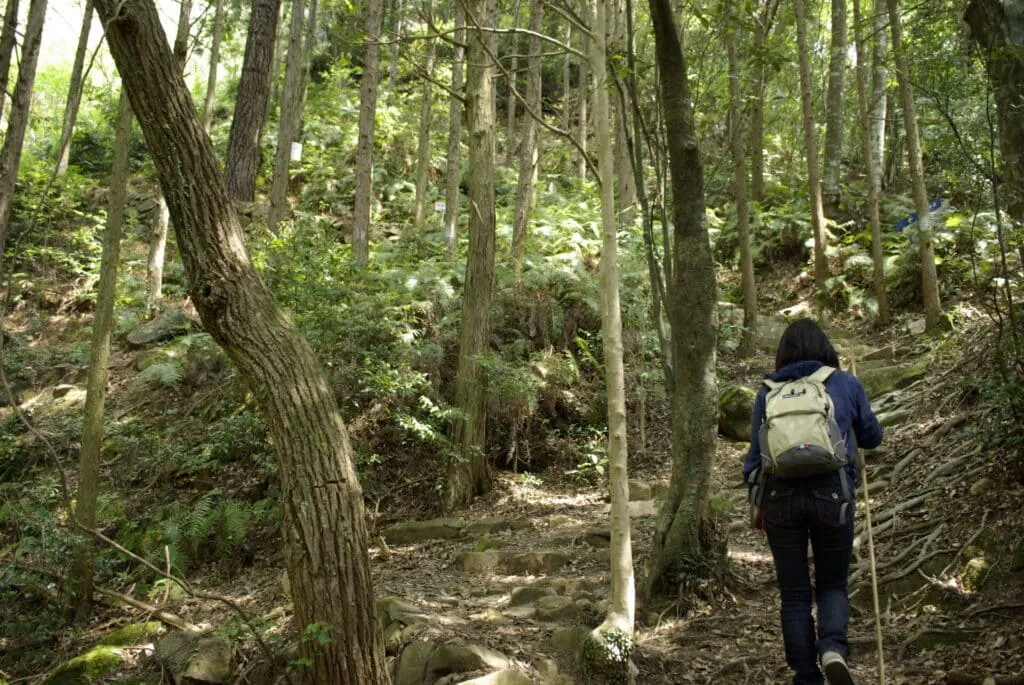
Kumano Hongu Storytellers’ Association official website
http://www.hongu-kataribe.jp/index.html
Kumano Kodo in Winter: 2 Hot Springs Along the Trail to Warm You Up
Kawayu Onsen — Sennin-buro (Winter-Only Riverside Bath)
Set on the Oto River, a tributary of the Kumano River, Kawayu Onsen is one of Wakayama’s signature hot-spring areas. Here, 70 °C spring water bubbles up from the riverbed and mixes with the river, creating natural baths.
Each winter (December–February), a vast open-air bath called Sennin-buro (“the thousand-person bath”) appears in the riverbed—perfect for soaking under open skies by day and star-filled nights.
Kawayu Onsen Sennin Baths
| Period. | Dec – end of Feb. |
| Bathing hours | 6.30am to 10pm. |
| Bathing fees | Free of charge |
| Parking | Free approx. 36 cars (approx. 150 m downstream from the hermit bath) |
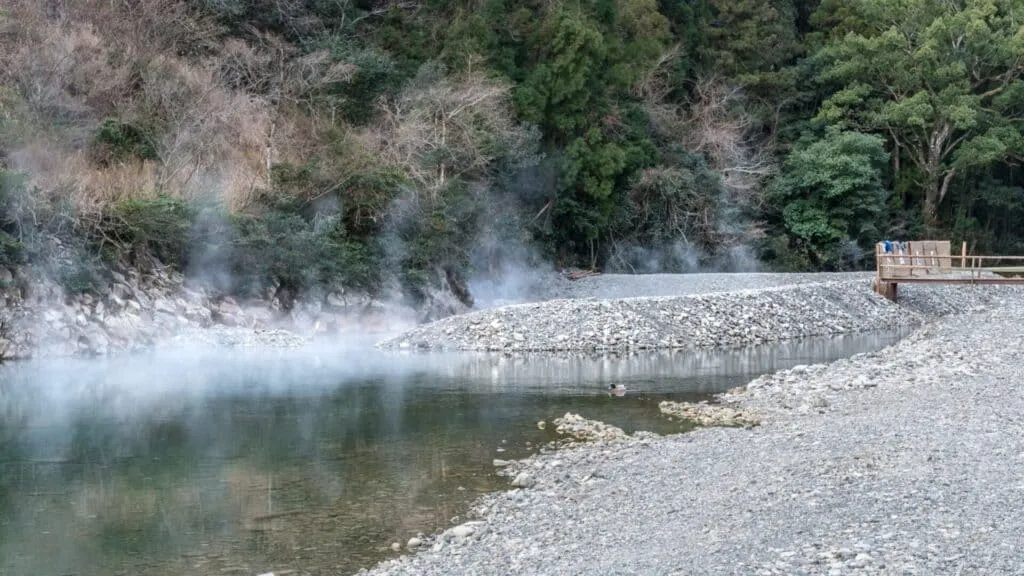
[Nakahechi Route] Yunomine Onsen – Tsuboyu
Located in the historic Yunomine Onsen, known as Japan’s oldest hot spring, Tsuboyu is a small rock bath that’s also part of the UNESCO World Heritage–listed Kumano Kodo.
This natural spring is fed directly from the source and is famous for its water that changes color daily, earning it the nickname “Seven-Colored Bath.”
A soak here is a must for anyone walking the Kumano Kodo, offering a timeless experience steeped in history and legend.
| Period | all year |
| Bathing time | 6:00 ~ 21:30 ※1 group 30 minutes |
| fee for a public bath | 770 yen per person. |
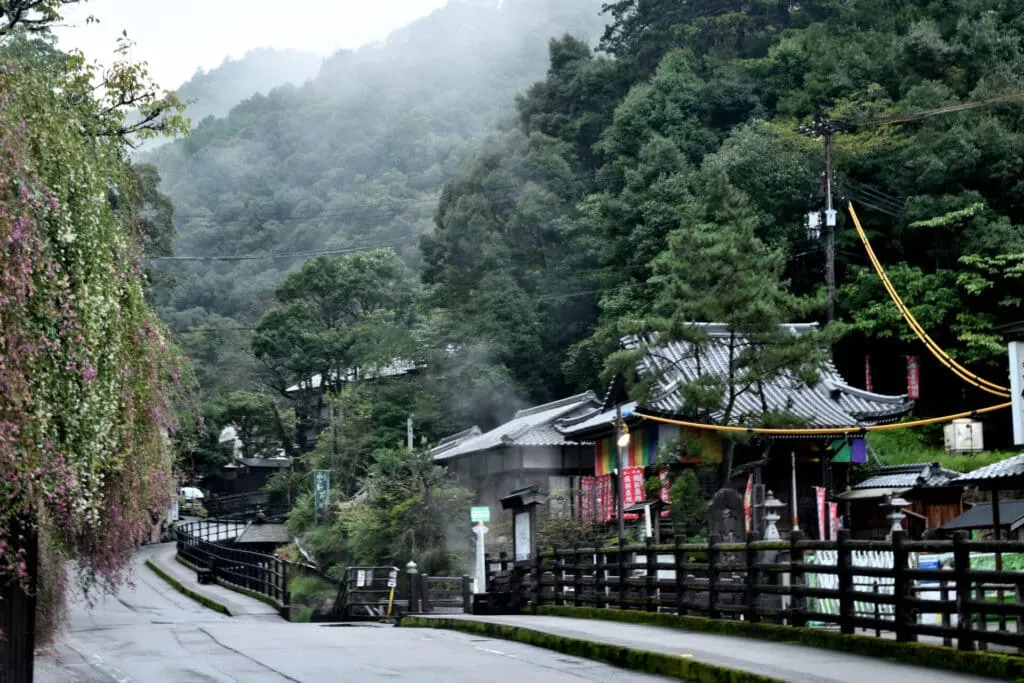
[Nakahechi] Nachi Falls
Nachi Falls—one of the Three Great Waterfalls of Japan—is among the country’s tallest single-drop waterfalls at 133 meters. You can visit year-round, but in winter the crisp air gives the falls an even more sacred, ethereal presence.
On especially cold winter mornings, you may see frost and patches of ice: the surrounding rock can turn white and parts of the plunge pool may glaze over. Don’t miss this winter-only face of Nachi Falls.
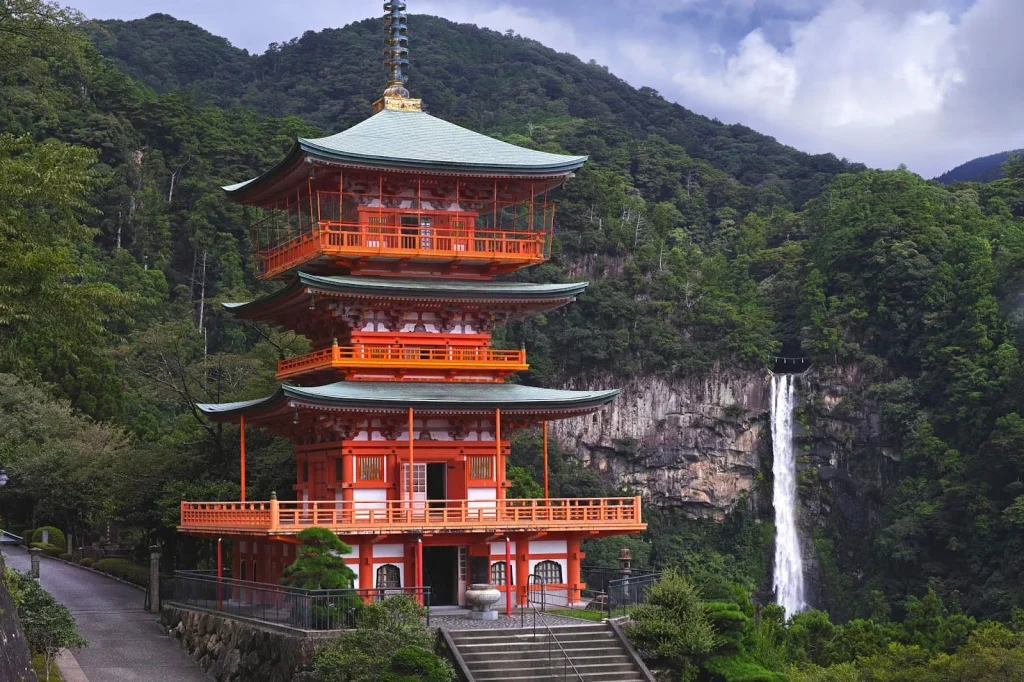
[Nakahechi] Dōkyū Zenmon Jizō in Winter
Along the section between Hoshinmon-oji—the gateway to the sacred area of Kumano Hongu Taisha—and Fushiogami-oji, you’ll find the Dōkyū Zenmon Jizō, a statue erected to commemorate pilgrims who perished on the road.
In winter, locals place a straw hat (and sometimes a small cloak) on the statue to keep it “warm.” Watching over travelers on the snow-dusted old trail, the Jizō’s gentle appearance—and the kindness behind it—warms the heart.
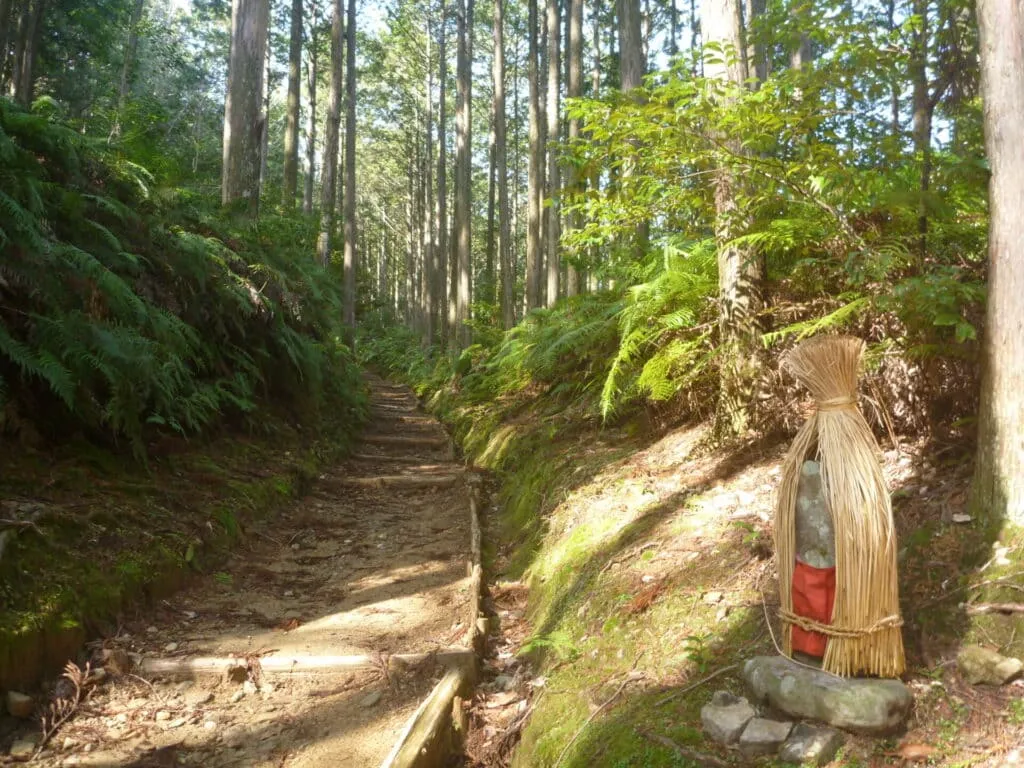
Morning Fog
Morning fog often forms from autumn through winter. Here are spots where you can experience its dreamy, ethereal beauty.
(1) [Nakahechi] Takahara Morning Fog
Takahara in Nakahechi-cho, Tanabe City is especially prone to morning fog and is affectionately known as “Kiri no Sato” (the Village of Fog). Thanks to the large day-night temperature swing and high humidity, chances of misty mornings are high.
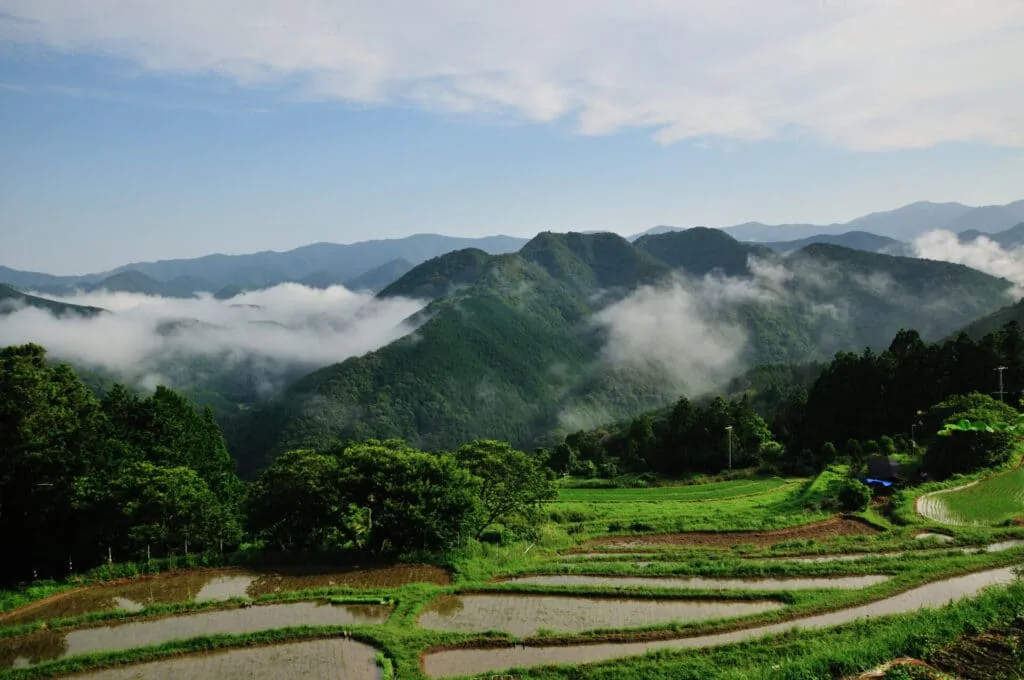
(2) [Nakahechi] Chikatsuyu Morning Fog
The village of Chikatsuyu, set in a basin carved by the Hiki River, is often blanketed in morning mist from autumn through winter. A gentle fog wraps the mountain hamlets in a soft, tranquil glow.
Spend a slow, relaxing evening and rise early to catch these beautiful, misty scenes.
(i) SEN.RETREAT TAKAHARA — Your Stay in Takahara
Opened in October 2021, SEN.RETREAT TAKAHARA is a renovated traditional house offered as a whole-house rental. With unmanned (self-service) operation, you can relax in complete privacy. An inclusive pantry—Wakayama-sourced meats and vegetables, sake, juices, and snacks—is included in the room rate, so you can simply enjoy without watching the budget.
Gather in the spacious, wood-warm living room, and in the evening share stories around the fire pit. After dark, a brilliant star-filled sky spreads overhead.
(ii) SEN.RETREAT CHIKATSUYU, a recommended place to stay in Chikatsuyu.
SEN.RETREAT CHIKATSUYU, which just opened in April 2022, is a seven-unit container villa with a stone oven for making pizzas and lava-plate BBQs. Like SEN.RETREAT TAKAHARA, it will be an all-inclusive accommodation.It is also possible to stay here with your dog!
What to Wear and Bring for Walking the Kumano Kodo in Winter
Climate (Weather & Temperature)
Although the Kumano Kodo lies in the southern part of Honshu, much of the trail runs through the mountains, so winters can feel quite cold. Daylight hours are shorter, so it’s wise to plan an itinerary that gets you to your lodge earlier in the evening.
The Ise-ji Route is comparatively mild, with little snowfall or accumulation and generally less rainfall in winter.
Around the Kumano Sanzan area (roughly 100–600 m in elevation), temperatures are similar to nearby lowlands, but can feel cooler on shaded forest sections and windy ridges.
Clothing, Footwear & Essentials
For the basics, please refer to our winter packing guide. In short: layered clothing (base/mid/shell), waterproof hiking shoes or boots with good grip, warm hat and gloves, and a headlamp for the early dusk.
Clothing
Winters get cold—pack proper insulation.
Wear layers (base layer, mid layer, and a wind/rain shell) and bring a warm hat and gloves.
Footwear
Trekking shoes are recommended.
Well-broken-in sneakers or walking shoes with grippy, non-slip soles can also work.
Note: The Kumano Kodo includes not only mountain paths but also long asphalt sections. Heavy mountaineering boots can feel cumbersome on pavement, so trekking or light hiking shoes are usually the better choice.
What to Bring
If your accommodations are fixed, you can ship part of your luggage ahead by courier.
Pack rainwear (jacket/pants) and a pack/rain cover in case of rain or snow.
Kumano Kodo in Winter: Summary
In this article, we introduced tips for enjoying the Kumano Kodo in winter.
While spring and autumn are often called the best seasons, there are many routes and sights that truly shine in winter.
Bundle up, prepare well for the cold, and make the most of the Kumano Kodo’s unique winter charm.

